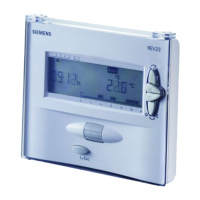
Do you have a question about the Siemens REV23 and is the answer not in the manual?
| Display | LCD |
|---|---|
| Protection class | IP30 |
| Control Output | Relay |
| Temperature control range | 5 to 30 °C |
| Power supply | 230V AC |
| Switching capacity | 10 A |
| Operating Voltage | 230V AC |
| Mounting | Wall |
| Switching Differential | ±0.5 °C |
Details the various operational functions and capabilities of the controller, including PID control and switching cycles.
Details programming options for the time switch, including day selection and heating/cooling periods.
Provides access to advanced settings for system calibration, control modes, and optimizations.
Explains how to calibrate the temperature sensor for accurate room temperature readings.
Describes the function that optimizes heating start times to reach setpoint by the desired time.
Explains the different control modes available, including 2-position and PID self-learning.
Explains how the controller generates a 24-hour operating schedule from the current program.
Explains how to switch the controller using remote operating devices and the display indicators.
Provides detailed steps for recalibrating the temperature sensor for accurate readings.
Details the optimization of heating start times based on system dynamics and setpoint.
Explains the self-learning PID mode, its adaptive capabilities, and how it optimizes control parameters.
Describes the PID mode, its self-learning adaptation to building systems, and parameter optimization.
Explains PID 12, PID 6, and 2-Pt control modes with their respective switching cycles and applications.
Details PID 12 mode for normal or slow controlled systems with a 12-minute switching cycle.
Details PID 6 mode for fast controlled systems with a 6-minute switching cycle.
Details how to reset user-defined data or all factory settings using buttons behind the pin opening.
Lists general specifications like operating voltage, battery life, and relay switching capacity.
Details safety class, sensing element type, and measuring range of the controller.
Illustrates the electrical connections for the room temperature controller and its components.
Shows wiring diagrams for connecting the controller to various HVAC equipment like water heaters and burners.

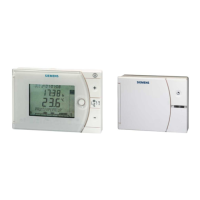
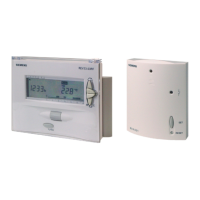
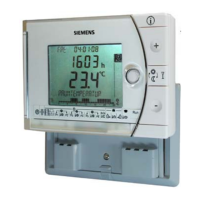

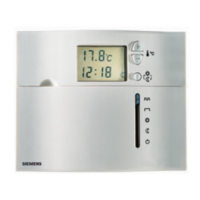
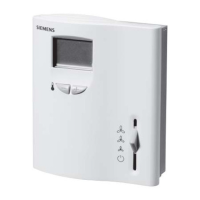


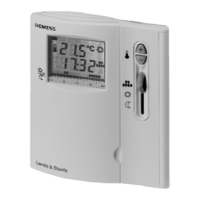
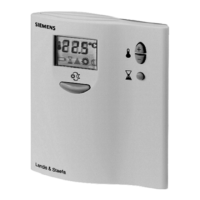

